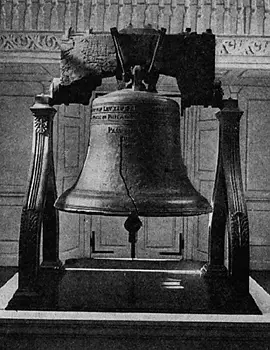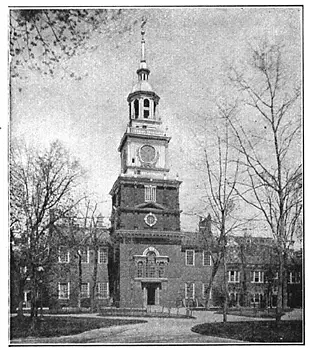The idea of the Liberty Bell began with the Pennsylvania Assembly, which in 1751 ordered the construction of a monument to celebrate the 50th anniversary of the Charter of Privileges, founder William Penn's blueprint for government of his beloved state. Based partly on a verse in the Christian Bible's Old Testament, the Assembly ordered a bell for the steeple of the Pennsylvania State House.
Disappointed, the head of the project in Pennsylvania, Assembly Speaker Isaac Norris, had the bell delivered back to England, to foundry workers John Pass and John Stow, who vowed to fix it. They did so and sent it back to Pennsylvania, where it was hung on March 29, 1753. The bell didn't crack this time, but the sound it now made was unpleasant to the people of Philadelphia, so Pass and Stow took it back and worked on it some more. On June 11, it was hung again. This time, it did not crack. Still, the people of Philadelphia didn't like the bell. Norris eventually asked for an entirely new bell. Again, the folks at Whitechapel Foundry (not Pass and Stow this time) went to work. Again, they delivered a bell, a totally different one.
The bell was soon used to call people's attention to important events and announcements, such as the 1761 announcement of King George III as ruler of Great Britain, the repeal of the Sugar Act of 1764, and the calling of meetings to discuss the Stamp Act of 1765. Other famous tollings announced the calling of the Continental Congress, the beginning of the Revolutionary War, and the announcement of the Declaration of Independence. This last, the most famous ringing, occurred on July 8, 1776, at the first public reading of the Declaration. The very next year, however, British soldiers occupied Philadelphia. The Liberty Bell, as it was then being called, was evacuated from the city and hidden under the floor boards of the Zion Reformed Church in Allentown, Pennsylvania. The bell was brought back to Philadelphia in 1778 but not rehung because the state house steeple, badly in need of repairs, couldn't hold it. The bell was finally rehung in 1785, when the steeple was rebuilt, and it tolled in 1787 to announce the ratification of the Constitution. It continued to toll to commemorate special days, like the 4th of July and George Washington's birthday, February 22. It is generally believed that the bell cracked for good on Washington's birthday, 1846. |
|
Social Studies for Kids
copyright 2002–2024
David White

 The Whitechapel Foundry in England made the bell and sent it to Pennsylvania. The bell arrived on Sept. 1, 1752. It was not hung in the steeple, however, for several months, finally seeing the light of day on March 10, 1753. When it was hung, the clapper struck the side so hard that it made a crack in the big bell.
The Whitechapel Foundry in England made the bell and sent it to Pennsylvania. The bell arrived on Sept. 1, 1752. It was not hung in the steeple, however, for several months, finally seeing the light of day on March 10, 1753. When it was hung, the clapper struck the side so hard that it made a crack in the big bell. When the new bell arrived, the people of Philadelphia thought it sounded no better than the old one, so Norris and company put it in the cupola on the statehouse roof, to toll the hours of the day. The Pass and Stow bell remained where it was, in the steeple.
When the new bell arrived, the people of Philadelphia thought it sounded no better than the old one, so Norris and company put it in the cupola on the statehouse roof, to toll the hours of the day. The Pass and Stow bell remained where it was, in the steeple.
